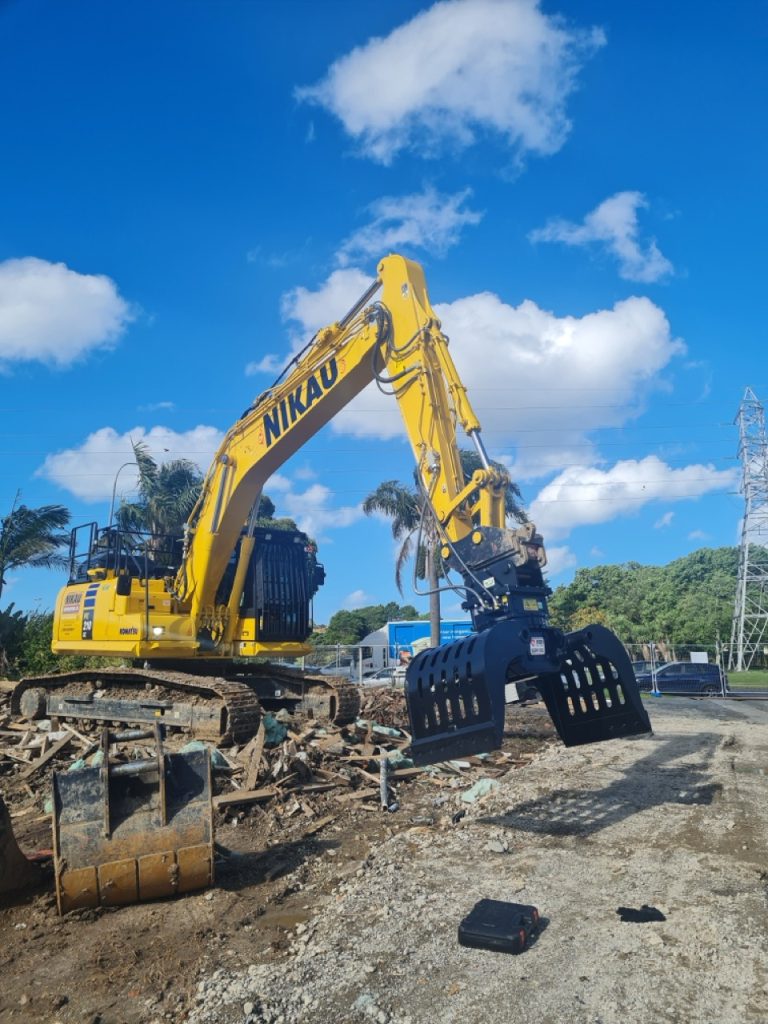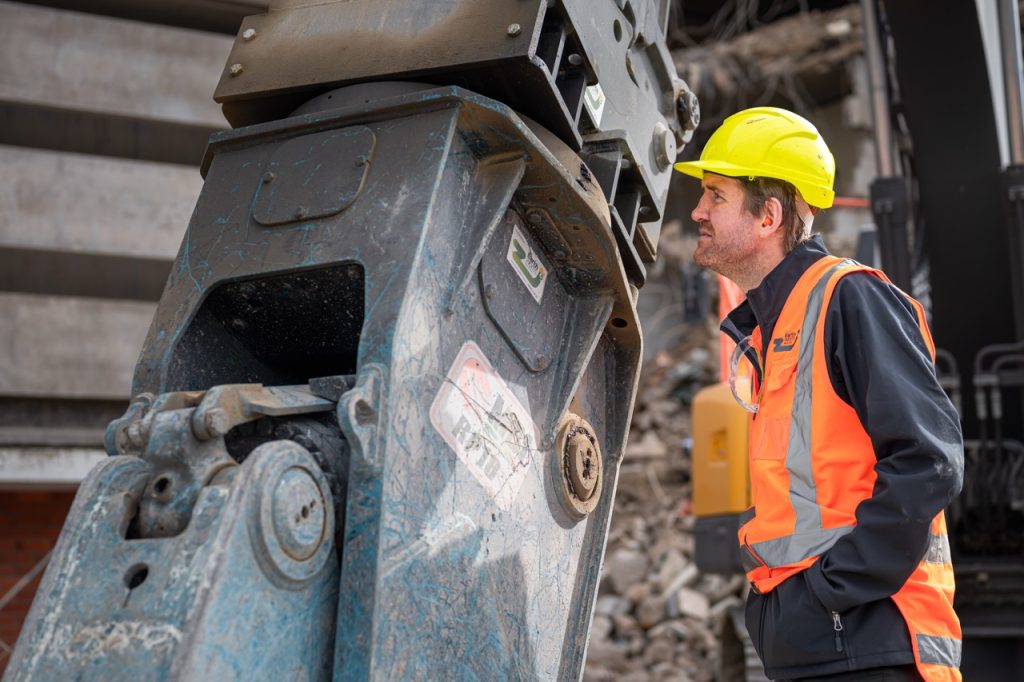Grappling with the big issues
With the variety of demolition work and the heavy demands on equipment, your choice of grapple can be crucial. That’s why we’ve prepared a handy checklist for when you’re researching your next attachment investment.



Demolition grapples are indispensable due to their versatility and efficiency. They speed up the demolition process and ensure the safe handling of materials, reducing the risk of injury and damage while increasing overall efficiency. Good grapple design allows for precise control, which is essential for the careful handling that comes with dismantling structures or sorting recyclable materials.
Not all grapples are created equal however. So, whether tearing down buildings, handling scrap, or sorting debris, choosing the proper equipment for your excavator is crucial. Here’s our grapple buying checklist.
1. Work out what’s best for your needs
Demolition Sorting Grapple: The MBI demolition grapple is known for its exceptional durability and performance. Manufactured by Mantovanibenne, a leader in demolition equipment, these grapples are designed and built with high-strength steel and reinforced components to ensure longevity and reliability in harsh working conditions. The in-built rotator gives exceptional control and the ability to precisely pick and place any products.
Grab Bucket: This type of grapple combines the functions of a traditional bucket and a grapple. It features a bucket-like structure with integrated grappling arm, making it versatile for grabbing materials. Demolition grapple buckets are strong, with not many moving parts and are less investment.
Hydraulic Grapple: These grapples have hydraulic systems that provide powerful and precise control. They are suitable for tasks that require brute strength in handling and placement of materials. Hydraulic grapples are commonly used where a good grab is critical, such as sorting recyclable materials or handling logs and wood waste. A rotator may or may not be offered with a hydraulic grapple depending on the design.
2. Check weight and size compatibility
One of the most crucial aspects of selecting a demolition grapple is ensuring its weight and size are compatible with your excavator. A correctly sized grapple will ensure the excavator operates efficiently and maintains balance and stability during operations. The right-sized grapple will reduce excessive wear and tear on both the grapple and the excavator, prolonging the lifespan of both.
There are a number of risks that come with an incorrectly specified grapple. Safety is a primary concern. Using a grapple that is too large or heavy for the excavator can cause the machine to become unstable, increasing the risk of accidents and tipping.
Overloading can also lead to premature wear, mechanical failures, and potential safety hazards. Underperformance can result in longer operational times, increased fuel consumption, and reduced overall productivity. General operational inefficiency is another consideration. An ill-fitted grapple can lead to inefficient material handling, requiring more passes to complete a task and increasing costs and project timelines.
Don’t leave this to chance – it pays to check with an expert attachment specialist before purchasing.
3. Assess hydraulic requirements
Excavators use hydraulic systems to power grapples. Understanding the necessary pressure and flow compatibility is vital, as mismatched specifications can lead to suboptimal performance or damage to the hydraulic components.
Hydraulic pressure determines the force with which the grapple operates, and flow rate dictates the speed at which the grapple can open and close. Check that the grapple’s hydraulic connections are compatible with your excavator’s system. If they don’t match, adapters or modifications may be required.
Some grapples may also require additional hydraulic circuits for extra functions such as rotation or running a hydraulic saw.
4. Evaluate cost. Calculate value.
A careful budget and cost analysis is always necessary before buying a demolition grapple. Here it’s important to look at the long-term investment and potential savings from increased efficiency and reduced downtime.

Always check if the price includes the cost of fitting to your machine, then check the total cost of ownership, including maintenance and potential downtime. Consider the accessories the grapple is supplied with. Does it have hydraulic rotation? Does it have hydraulic protection built in? Are load holding valves included?
It helps if your attachment is supported by a strong warranty and quick, easy availability of spare parts. A good maintenance service plan can be worth its weight in gold here, adding years of reliable service to the grapple and, along with it, enduring peace of mind to owner and operator.
Still grappling with what’s best for your excavator?